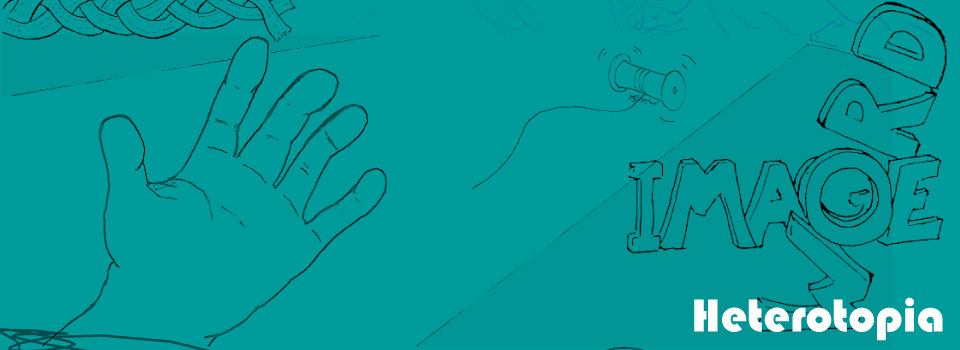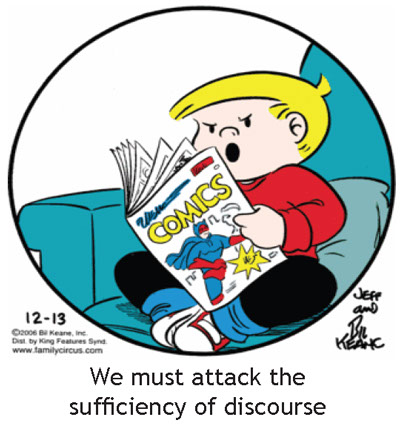
x
Contents
Home
Home
Home
This nexus is more linear and sequential than the others. From a firm division between image and text we’ve moved to decoupage and tressage. We’ve made a Heideggerian move from nouns to verbs at least. However, we’ve yet to make the supreme Heideggerian moves of the always already (non)reflexive and the ambivalent middle voice. For now, we will end this particular thread with Lyotard and the impossibility of any ending at all.
There is no absolutely Other, but there is the element dividing itself and turning over, becoming vis-à-vis and therefore perceptible; there is a “there is” that is not originally a heard utterance, but the product of a driftwork that tears the element in two, leaving the flanks in the imbalance that the ethical life indeed speaks of but that belongs to the seer and the visible, that is unheard speech. . . .
Yet to know what happens in the end when one simply combines word and gesture, when saying is dissolved in seeing. Either saying goes silent, or the seen must already be something like a said. (Discourse 5-6)
The space must be preserved so that it can again be interrupted through multimodal dialogue, moving across and back, weaving, creating a text that will truly require braiding, tressage. This can be approximated with words alone as well, as Lyotard does in “It’s as If a Line . . .” his brilliant essay on Valerio Adami. Here Lyotard works over his text almost as one would a drawing, rubbing the words to show their etymologies and traces. “It’s as if a line were a sentence pursued by other means” (457), Lyotard writes. Being skilled in rhetoric means making ourselves aware of these other means, and for those of us who are mainly skilled in text, that may mean developing new techniques. As Lyotard reminds us, discourse is not sufficient. It is too easy to reduce the seen to something like a said, and that task has been shown to be impossible. Images and text are different, and attempts to mark that difference by purely textual means will always leave out more than they take in.
Figure|Discourse
draws

Lyotard Family Circus
Yet we must also resist seeing the image as a promise of ultimate escape, as Jacques Rancière reminds us:
The Image—that is, the “original image” of Christian theology, the Son who is not “similar” to the Father but partakes of his nature. We no longer kill each other for the iota that separates this image from the other. But we continue to regard it as the promise of flesh, capable of dispelling the simulacra of resemblance, the artifices of art, and the tyranny of the letter. (8)
The homo(i)ousia of discourse and figure is an almost theologically weighted paradox. Words and images are clearly not the same. Yet they also cannot be too radically different. Within rhetoric and composition, this relationship has taken on a more trinitarian mode, following Peirce’s trifold structure of the sign (as opposed to Saussure’s bifold structure). As we can see in Joddy Murray’s system of nondiscursive symbolization, though, trinities can be just as hegemonic and unstable as binaries.


